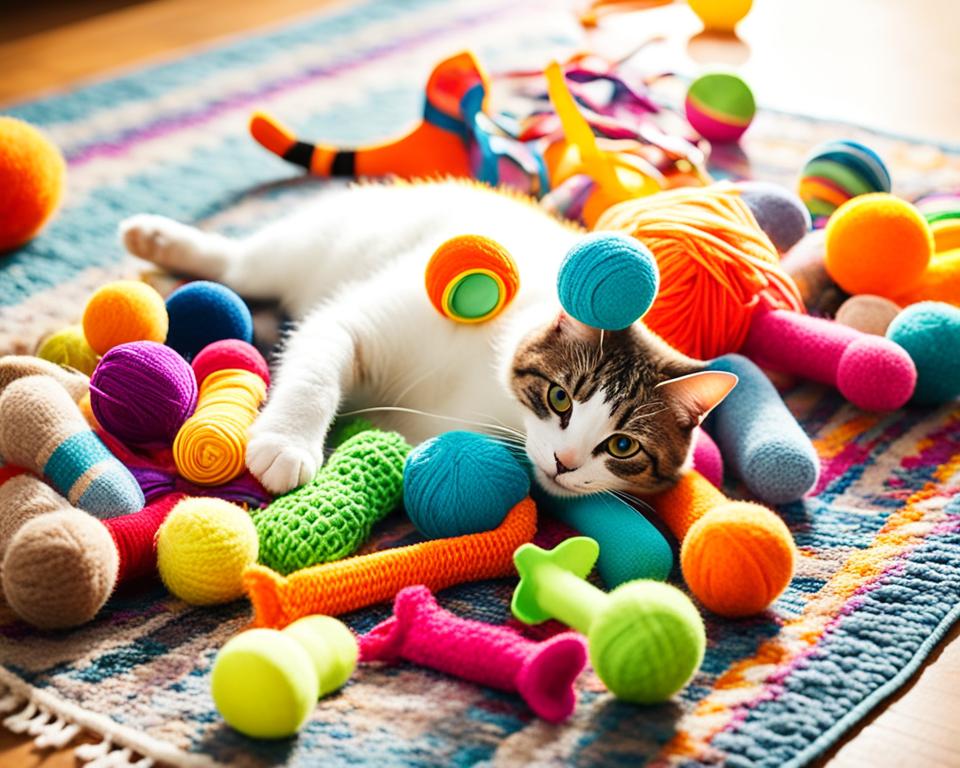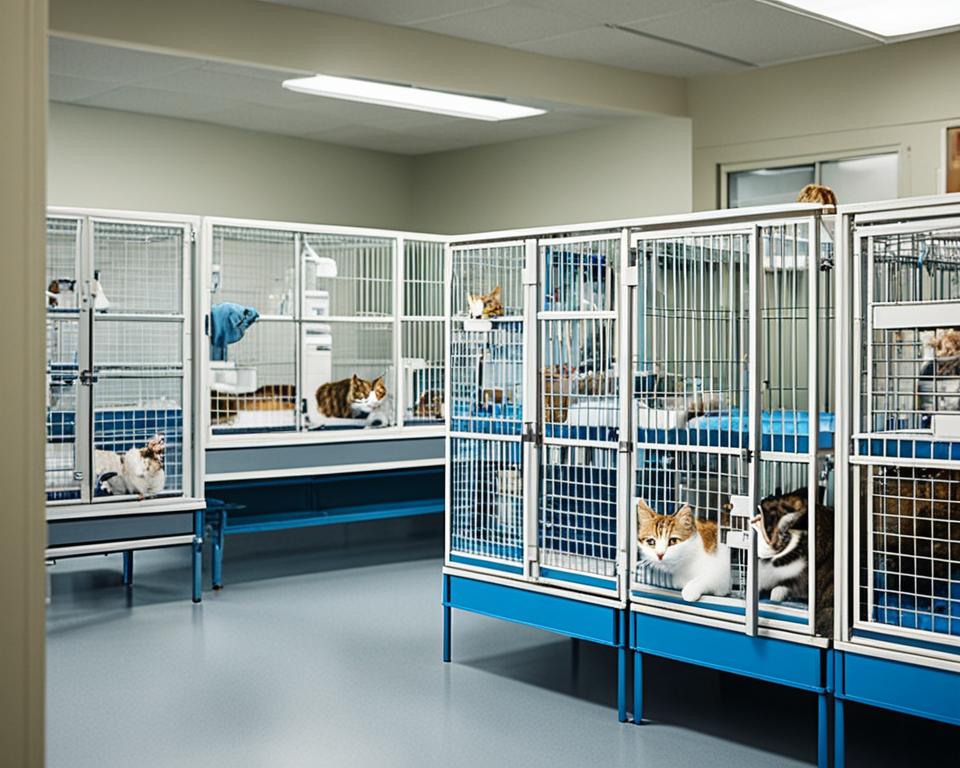I always thought adopting a cat was a journey full of love and kindness. When I wanted a new pet, I looked at shelter cats. This choice showed me how many animals need homes.
Did you know there are millions of stray cats in the U.S.? This fact shows why helping animals is so important. By adopting, we save a life and help with the shelter problem.
Being with shelter cats taught me each one is special. You can find everything from playful kittens to calm adults at shelters. Spending time with cats at the shelter helped me find my perfect pet.
Adopting a cat is more than just bringing one home. It’s about making a loving home and building a strong bond. Let’s explore how rescuing cats can change a life for the better.
Why Choose a Rescue Cat?

Adopting a rescue cat is a rewarding experience. It brings joy to both the cat and the owner. You’re not just getting a pet; you’re saving a life and practicing responsible pet ownership.
Saving a Life
By adopting a rescue cat, I’m making a real difference. Did you know that about 70% of shelter pet deaths in the U.S. are cats? That’s a staggering number. When I choose to adopt, I’m giving one of these furry companions a second chance at happiness.
“Every cat adopted from a rescue translates to one less animal at risk of euthanasia in an overcrowded shelter.”
Cost-Effective Option
Adopting a rescue cat is often more budget-friendly. The adoption fees cover initial medical costs, like vaccinations and spaying or neutering. This lets me give a loving home to a cat in need without spending a lot.
Wide Variety of Cats Available
Rescue organizations offer a wide variety of cats. Whether I’m looking for a playful kitten or a calm adult cat, I’m sure to find my perfect match. Plus, the staff at these shelters know their cats well. They can help me choose a feline friend that fits my lifestyle.
| Benefits of Adopting a Rescue Cat | Impact |
|---|---|
| Saves Lives | Reduces euthanasia rates in shelters |
| Cost-Effective | Lower adoption fees, includes initial medical care |
| Variety | Diverse breeds, ages, and personalities available |
| Support | Ongoing advice from rescue organizations |
By choosing a rescue cat, I’m not just gaining a new family member. I’m supporting animal welfare, fighting against inhumane breeding practices, and becoming part of a community that values second chance pets. It’s a decision that benefits both the cat and me, making it a win-win situation in the world of responsible pet ownership.
Preparing Your Home for a Rescue Cat

I’m excited to share my tips on getting your home ready for a new feline friend. Making a cozy space for your rescue cat is key for their comfort and adjustment. Let’s look at the essentials of cat care and pet supplies you’ll need.
First, set up a quiet room with a comfy bed, scratching post, and hiding spots. This safe zone helps your cat get used to their new home slowly. Place food and water bowls away from the litter box, just like in the wild.
Speaking of litter boxes, here’s a handy guide:
| Number of Cats | Recommended Litter Boxes |
|---|---|
| 1 | 2 |
| 2 | 3 |
| 3 | 4 |
Cats love vertical spaces. A cat tree or window perch gives them a great view and meets their climbing needs. Don’t forget toys to keep your new pet happy and active.
Make your home safe for cats by removing toxic plants, securing wires, and blocking off small spaces. Be patient during this time. Some cats may take weeks to fully adjust, so give them time and space.
“A little preparation goes a long way in making your new cat feel at home.”
Last, schedule a vet visit within the first week to check your new cat’s health and make sure they’re up-to-date on shots. With these steps, you’re on your way to giving your rescue cat a loving home.
The Adoption Process: From Shelter to Forever Home

Adopting a rescue cat is a warm journey. It has many steps, each one bringing you closer to your new cat. Let’s look at how to find the right cat at animal shelters.
Researching Local Shelters
First, search for animal shelters near you. Many have websites with pictures of their cats. Last year, hundreds of thousands of cats found new homes. Shelters have many cats waiting for homes. Some even have adoption events at local shops.
Meeting Potential Feline Friends
Then, visit the shelter to meet cats in person. Spend time with different cats to find the right one. Ask staff about each cat’s past and personality. Remember, 30% of adopted pets need time to adjust at home.
Completing Adoption Paperwork
After finding your cat, fill out the adoption papers. Fees are usually $50 to $175, based on the shelter and location. You’ll need to answer questions about your home and pet experience. Some shelters might check your home or ask for references.
- Inquire about the cat’s medical history and special care needs
- Ask about spaying/neutering, vaccinations, and microchipping
- Discuss any post-adoption support or resources offered by the shelter
Before your cat goes home, make sure you have food, a litter box, and toys. Remember, 20% of new owners aren’t ready for pet-proofing. With the right prep and love, you’ll be ready for your new cat.
Adopting a Rescue Cat: Health Considerations
When I adopted my rescue cat, I learned that cat health is very important. Proper veterinary care helps our cats live long, happy lives. Cats can live up to 20 years with the right care. That’s why I’m excited to share some key health tips for new cat owners.
Initial Veterinary Check-up
The first step in feline wellness is a vet visit. My vet did a full health exam, including fecal tests and shots. This found any immediate issues like respiratory infections or ear mites, common in shelter cats. A healthy cat has bright eyes, pink gums, and a shiny coat.
Vaccinations and Preventive Care
Keeping cats up-to-date on vaccines is key for their health. Core vaccines protect against serious diseases, and preventive treatments keep away fleas and ticks. In some places, like New Hampshire, rabies vaccines are required by law. Regular vet visits and booster shots are part of being a responsible pet owner.
Spaying/Neutering
Many shelters spay or neuter cats before adoption, but it’s also important to do it if not. This stops pet overpopulation and prevents health issues. It might cost a bit, but it’s worth it for your cat’s health. I found that early health investments led to fewer vet visits and a happier cat.

